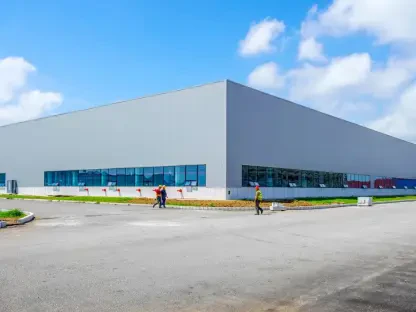In 2022, US businesses faced a striking 19.6% jump in logistics costs, with carrying costs accounting for more than half of these increases. If you’re currently relying on basic inventory tracking systems, you might be handling your inventory adequately for now. However, as your business grows, the necessity for a more robust system to keep up with demands and maintain competitiveness will become increasingly apparent. This is where real-time inventory management steps in, providing immediate insights into what’s selling, fulfilling orders faster, and keeping customers satisfied across all channels. In the following sections, we will explore the steps to implement real-time inventory management and the tools needed to enhance your business operations effectively.
1. Centralize Your Inventory System
The first step towards mastering real-time inventory management is to centralize your inventory system. Basic POS systems may handle store inventory well, but they often fall short when managing multi-channel operations across physical stores, online shops, and warehouses. This often results in businesses conducting daily manual counts to keep online inventory accurate. The solution lies in implementing a POS system that seamlessly integrates with your eCommerce platform, centralizing all inventory data into one unified system.
To achieve this, start by migrating your existing inventory data to a centralized platform. Ensure that your eCommerce and POS systems are on the same platform, which facilitates synchronizing inventory across all sales channels. Next, set up inventory rules tailored to each store or warehouse, providing clear guidelines for stock movement. Establish automatic updates across all sales channels to maintain real-time accuracy. For example, a Danish tea store, TeSelskabet, managed its inventory effectively by using Shopify POS and Shopify-certified apps, which enabled bi-directional sharing of product categories, tags, and bundles between its POS system and eCommerce platform. This approach led to automatic inventory updates and prevented overselling, resulting in a 25% sales increase.
2. Utilize Real-Time Data Synchronization
Once your inventory system is centralized, the next step involves utilizing real-time data synchronization across all platforms. Real-time data synchronization ensures that your inventory is updated the moment a change occurs, such as new stock arrivals, sales, or returns. This eliminates the need for manual data entries and helps maintain the accuracy of inventory levels across all sales channels.
Begin by enabling instant updates for all new stock, which ensures that any recent inventory is immediately reflected in the system. Set up auto-adjustments for sales and returns, minimizing discrepancies and maintaining up-to-date inventory data. Regularly schedule automatic checks to verify that everything is syncing correctly. For instance, Shopify seamlessly synchronizes key metrics in real time, such as sales transactions, product returns, exchanges, inventory restocks, and stock transfers. This ensures that store staff and online shoppers always see accurate availability, reducing the frequency of physical inventory counts and maintaining reliable inventory reports.
3. Integrate Scanning and Tracking Technology
Effective inventory management hinges on the accuracy and speed of tracking inventory movement, and integrating scanning and tracking technology is a crucial step in this process. Implementing tools such as barcodes, RFID tags, QR codes, and IoT sensors can significantly enhance inventory tracking across multiple locations.
Barcodes enable rapid identification and tracking of products within stores and warehouses by scanning patterns of black lines and white spaces that contain product details like SKUs, prices, and descriptions. When scanned, barcodes instantly display the necessary product information, updating inventory in real time and preventing stockout issues through low-stock alerts and reorder notifications. Similarly, RFID tags offer wireless tracking of inventory, allowing simultaneous scanning of multiple items without a line of sight, enhancing durability, security, and speed of inventory counts.
QR codes provide a modern alternative by being scannable via smartphones and updating centralized inventory databases in real time, offering secure transactions at a lower cost compared to traditional POS systems. Additionally, IoT sensors, such as smart shelves and temperature sensors, further support inventory management by monitoring conditions and movements, triggering reorder alerts, and ensuring optimal storage conditions.
4. Enable Inventory Alerts and Automation
Manual tracking of inventory across multiple channels is both risky and time-consuming. Enabling inventory alerts and automating repetitive tasks can significantly reduce errors and allow your team to focus on higher-value activities. Platforms like Shopify Flow allow businesses to create custom workflows that automatically trigger specific actions based on inventory conditions.
For instance, you can set up smart alerts to prevent stockouts by monitoring inventory levels across locations. When stock drops below a threshold, an automated workflow could send a Slack notification to your purchasing team, generate a draft purchase order, and email your supplier with the order details. By automating such processes, businesses minimize manual intervention, reduce errors, and save time. Shopify POS Pro subscribers also benefit from additional features using the Stocky app, including demand forecasting and automated purchasing recommendations.
An effective use case is running a clothing store that needs to maintain optimal stock levels for bestselling items, like t-shirts. You could create a workflow to trigger when any t-shirt variant drops below 20 units, notify the purchasing team via Slack, generate a draft purchase order for additional stock, and email your supplier. This approach ensures seamless inventory management and prevents disruptions in product availability.
5. Analyze Trends and Forecasting
Real-time inventory management goes beyond tracking current stock levels; it involves using data to make informed decisions about future inventory needs. By leveraging historical data and real-time analytics through a unified system, businesses can optimize inventory planning and improve decision-making.
Begin by setting up regular reporting cycles for key metrics such as sell-through rates, channel performance, and stock turnover. Configure an analytics dashboard to monitor trends and patterns across all sales channels. Create automated alerts for significant trends or deviations, allowing prompt action to mitigate potential risks. Shopify’s analytics tools facilitate this process by offering built-in demand forecasting reports that suggest products for your next purchase based on sales data, turnover ratios, and seasonality. These tools also identify which products to discount, helping businesses maintain optimal inventory levels and profitability without the need for manual analysis.
6. Train Your Staff on the System
In 2022, US businesses experienced a significant 19.6% increase in logistics costs, with carrying costs contributing to over half of this rise. If your current inventory management relies on basic systems, you may find it sufficient for now. However, as your business expands, the need for a more advanced system will become evident to keep up with demand and stay competitive. This is where real-time inventory management becomes essential. Real-time inventory management offers immediate insights into what products are selling, speeds up order fulfillment, and ensures customer satisfaction across all sales channels.
It’s clear that as your business grows, adapting to a more sophisticated inventory system is crucial. Implementing real-time inventory management can address these challenges effectively. It allows you to track inventory levels instantly, reducing the risk of stockouts and overstocking, which in turn minimizes carrying costs. Furthermore, it ensures that you can meet customer demands promptly, enhancing the overall customer experience.
In the following sections, we’ll delve into the steps required to implement real-time inventory management in your business. We’ll also explore the tools and technologies that can help streamline your inventory operations, making them more efficient and responsive to market demands. This shift not only helps in cutting down logistics costs but also positions your business to thrive in a competitive market.








